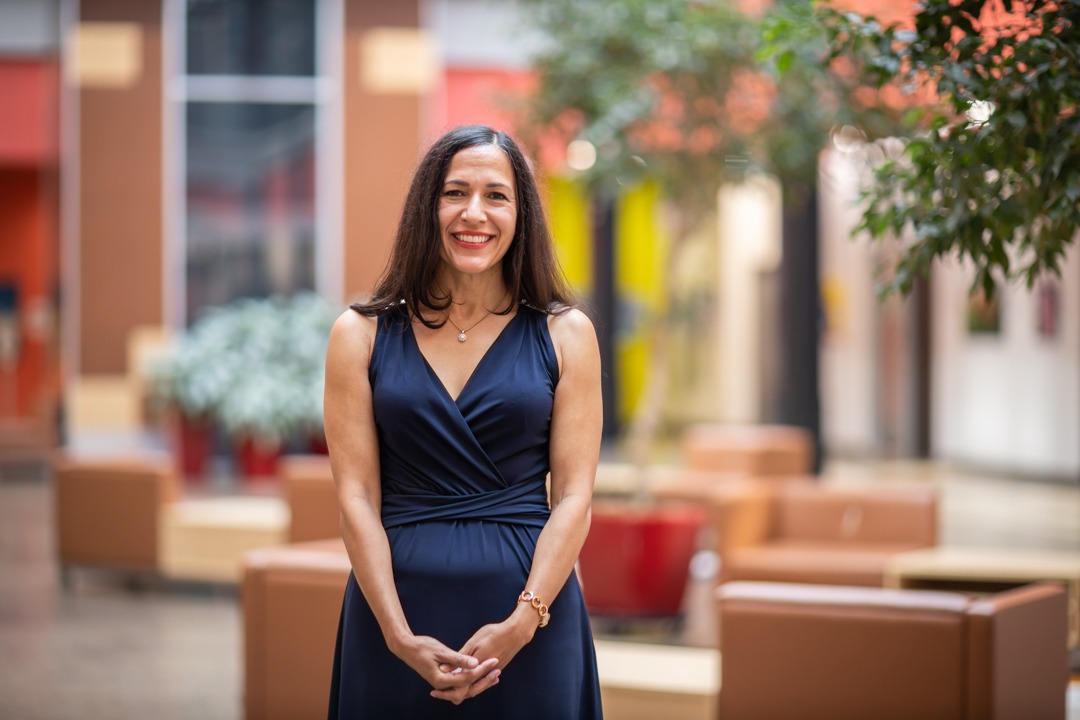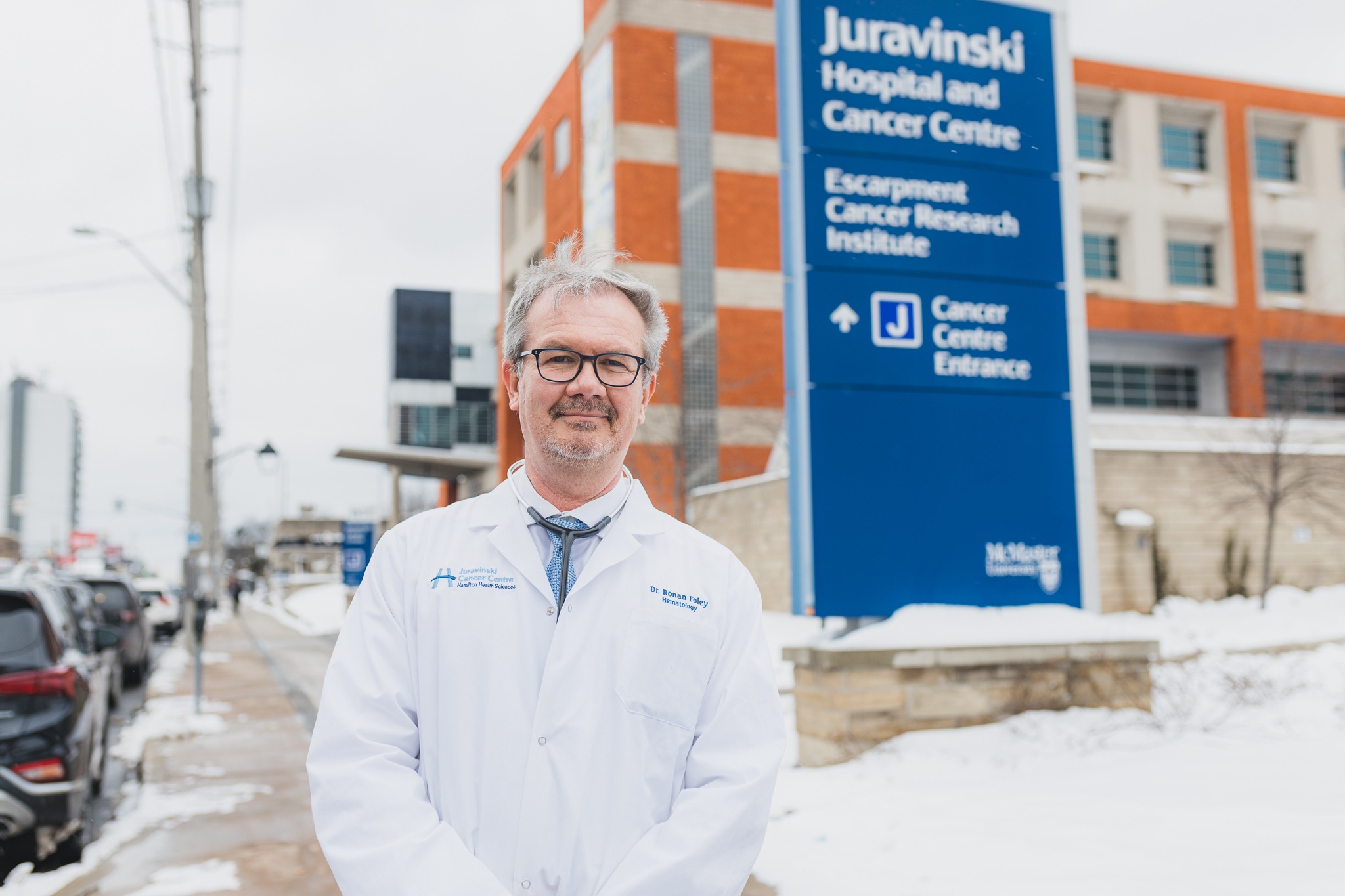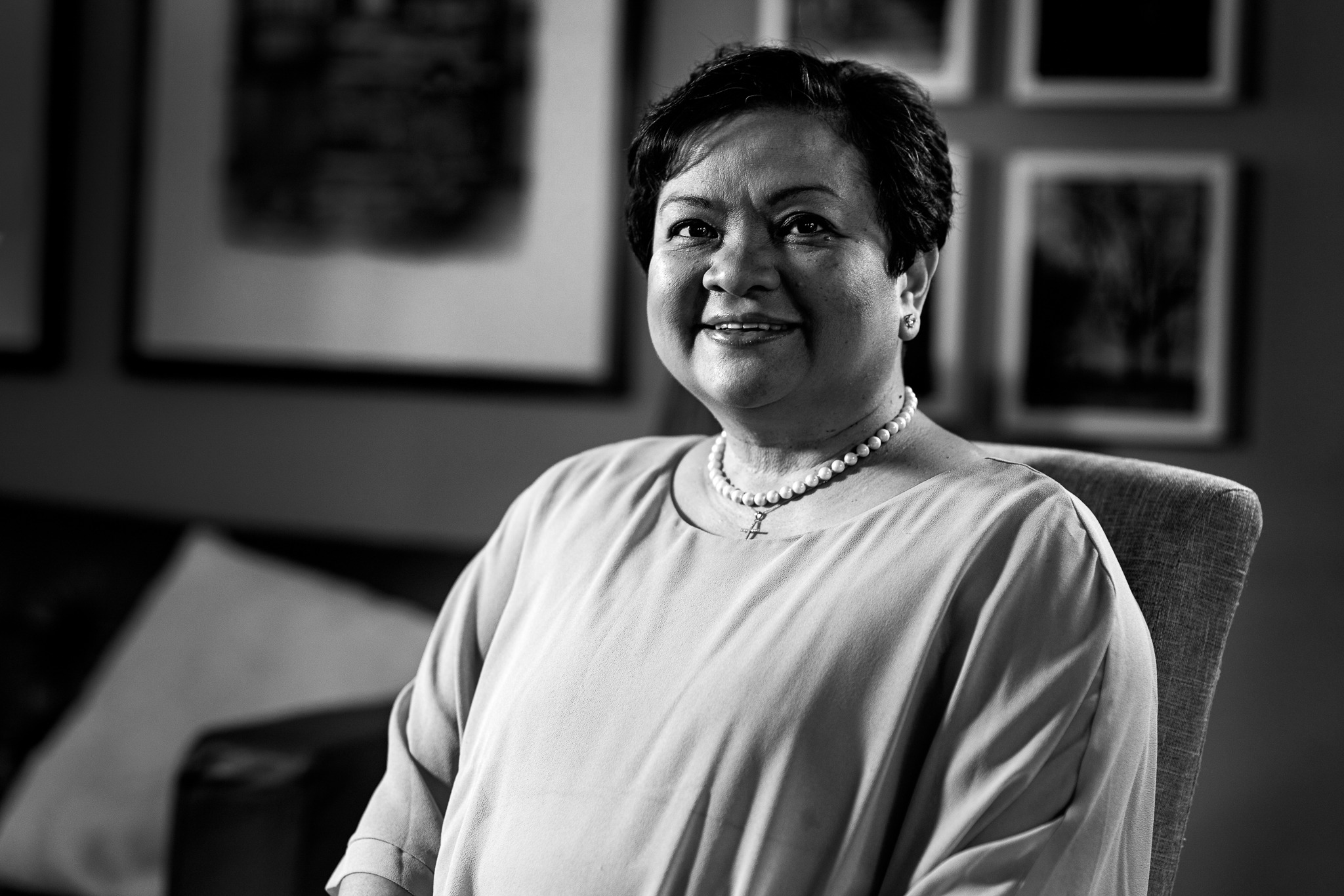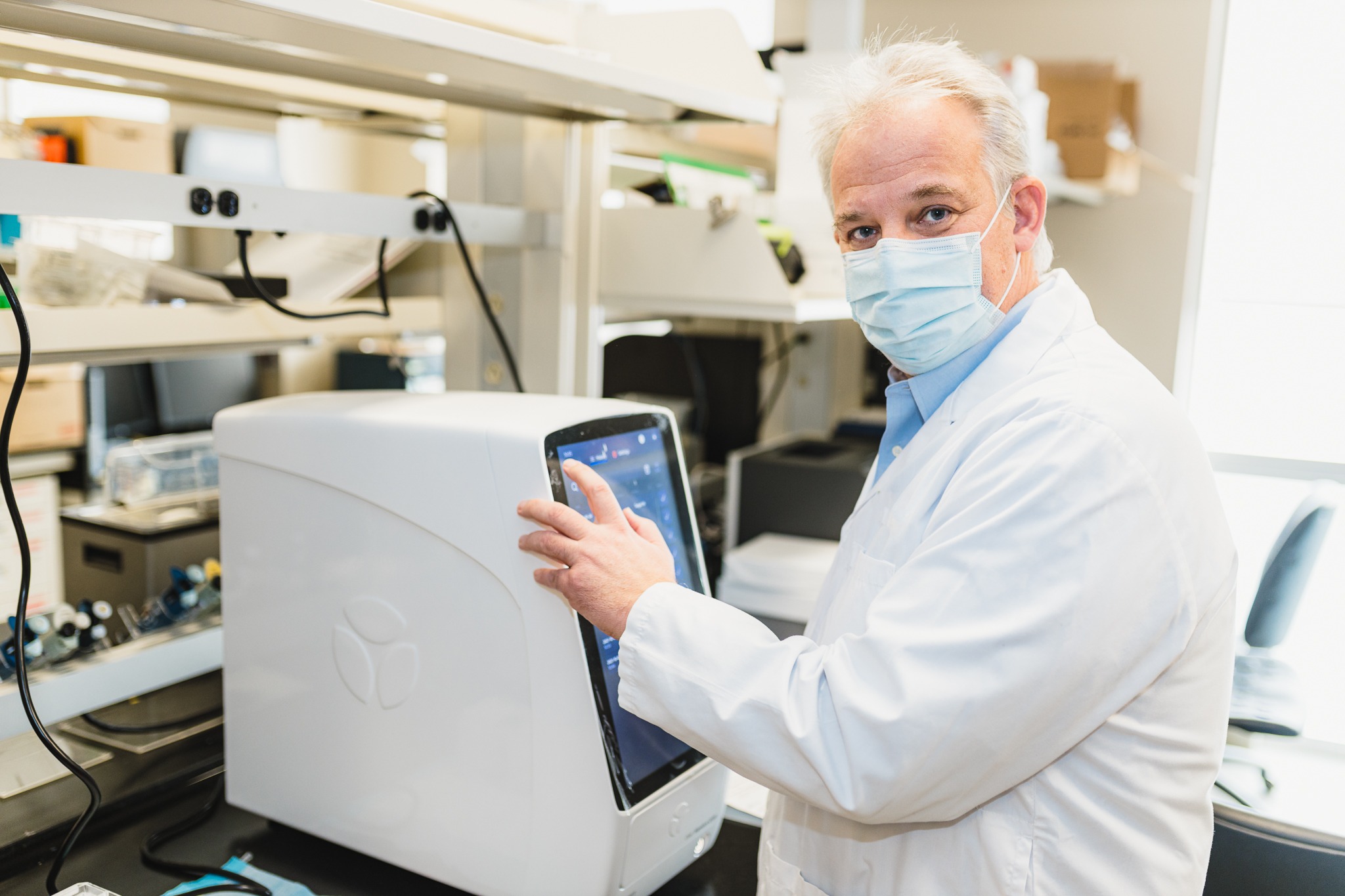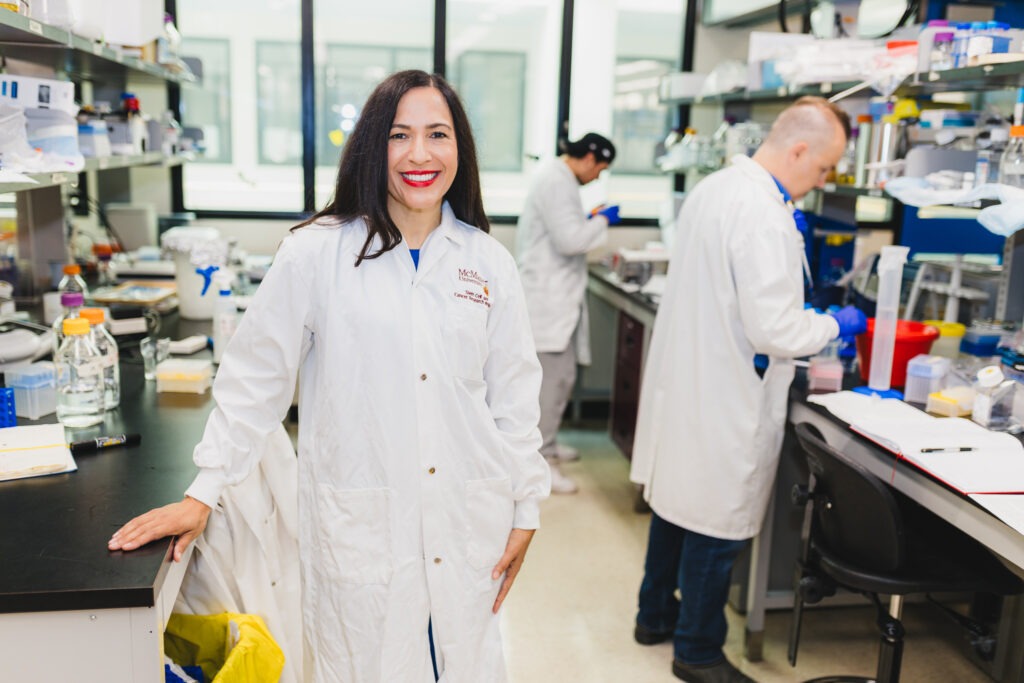
Increased collaboration key to advancing cancer treatments
As a clinician scientist, Dr. Sheila Singh has a foot firmly planted in two worlds – biomedical research and direct patient care.
Clinician scientists are medical doctors and biomedical researchers, whose passion lies in discovering new treatment options for patients through scientific research.
Singh is a highly accomplished neurosurgeon whose roles include division head of neurosurgery for McMaster University and pediatric neurosurgeon at Hamilton Health Sciences’ McMaster Children’s Hospital.
She’s also a groundbreaking researcher and director of the Centre for Discovery in Cancer Research at McMaster University, where her Sheila Singh Lab is located. Her two worlds come together when research discoveries from the lab are translated into new treatment options for patients.
“When I run out of treatment options for a patient with a deadly cancer, my very first stop is the lab.”
“Through research I’ve got one foot in the world of basic discovery science, and as a neurosurgeon I’m directly involved in patient care,” says Singh, whose research focusses on extending the lives of patients diagnosed with three types of aggressive and lethal brain cancers:
- Glioblastoma is an incurable brain cancer that can affect people of any age. Less than five percent of people diagnosed with glioblastoma live past five years and most will die within two years.
- Medulloblastoma is a common, malignant and often deadly childhood brain cancer. And it’s the reason Singh pursued a career in brain cancer research. As a medical student in Toronto over 20 years ago, Singh met two boys with this cancer. Their tumours appeared very similar under a microscope, and both boys were treated with chemotherapy and radiation. Yet despite the similarities in their cancer’s appearance and treatment, one boy recovered and the other died. In order to understand the difference between these two tumours, and how this could have impacted outcomes for these young boys, Singh turned to the world of research.
- Brain metastases happen when cancer cells spread from their original site elsewhere in the body to the brain. These cancers are 10 times more common than glioblastoma, and one of the major causes of fatality in cancer. They are also considered untreatable.
“When I run out of treatment options for a patient with a deadly cancer, my very first stop is the lab,” says Singh. “It’s where I go to search for solutions to clinically unsolvable problems.”
Increased collaboration needed
Singh’s dual role isn’t the norm. “Currently, research tends to sit in one bucket, and clinical care in another,” says Singh, who finds herself acting as a go-between, constantly on high alert for research findings that could help extend the lives of patients with aggressive brain cancers. This could be through new research, like the work done in her lab, or existing basic research happening at universities.
“One of the best ways to discover new treatments is to create an environment where these teams can share information and collaborate on solutions.”
Basic research focusses on advancing knowledge rather than solving a problem, such as new treatment options for an aggressive cancer. But basic research findings could have benefits for patients that haven’t yet been explored.
“There’s a great deal of basic research that could be applied to clinical problems, but because our physicians and researchers work in different worlds this isn’t happening nearly as much as it could, or should,” she says.
For example, a basic research project might look at a group of cells so that scientists can learn more about how these cells signal to each other. “It’s research for the sake of research, and isn’t being done with human health advancements in mind,” says Singh. “But what if, even years down the road, this research could hold the key to helping patients with Alzheimer’s disease?”
Translational research creates new medical treatments
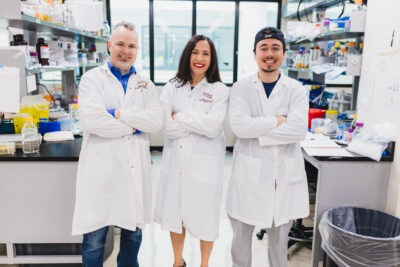
Dr. Sheila Singh (centre) in the Singh Lab with team members Shawn Chafe (left) and Daniel Mobilio (right).
Singh’s lab focusses on translational research, where the purpose is to search for new and better treatments for brain cancers.
For example, Singh and her research team recently discovered how glioblastoma can evade chemotherapy and radiation treatments. Minimal residual disease (MRD) refers to a small number of cancer cells often left in the body after treatments. Singh’s team monitored five patients with MRD over four years, and discovered that the MRD cells were able to survive chemotherapy and radiation by mutating. In each patient, the cancer’s reoccurrence followed a different pathway, suggesting that future treatments could be more successful – and help patients survive longer — if tailored to their individual situation.
The power of sharing information
Singh would like to see a culture developed in Hamilton where basic researchers, clinical trial researchers, clinician scientists and hospital clinicians work collaboratively to explore and develop new treatment options for patients.
“One of the best ways to discover new treatments is to create an environment where these teams can share information and collaborate on solutions,” says Singh.
“My dream is to see all of the amazing research happening in Hamilton become highly collaborative with these health-care professionals working together to generate new solutions for our patients to prolong their lives or even cure their disease.”


